Laser Knowledge
Ultimate Guide to Metal Cutter:Plasma Cutter or Laser Cutter
When it comes to metal cutting, two popular options that offer precision and efficiency are plasma cutters and laser cutters. Both technologies have their strengths and applications, making it essential to understand their features, advantages, and limitations. In this comprehensive guide, we will compare plasma cutters and laser cutters, helping you make an informed decision based on your specific metal cutting needs. By delving into their working principles, applications, and key considerations, you’ll gain valuable insights into which tool is the best fit for your projects.
Metal Cutter
Plasma Cutter
Plasma cutter is a versatile and efficient method used to cut through electrically conductive materials, including various metals such as steel, aluminum, and copper. Among the different types of metal cutters, plasma cutters stand out for their ability to produce clean, precise cuts with minimal heat-affected zones.
CNC plasma tables have become indispensable tools in the field of metal fabrication. These advanced machines utilize computer numerical control (CNC) technology and the power of plasma cutting to deliver precise and efficient metal cutting and fabrication. In this article, we will explore the features, benefits, and applications of CNC plasma tables, highlighting their significant impact on the metalworking industry.
CNC Plasma Table
In the realm of metal fabrication, CNC plasma tables have emerged as a revolutionary tool, transforming the way metal is cut and shaped. In this blog post, we will delve into the concept of CNC plasma tables, their components, and how they work to deliver precise and efficient metal cutting solutions.
CNC plasma tables employ plasma cutting technology, which utilizes a high-velocity jet of ionized gas (plasma) to melt through metal materials. This cutting method offers several advantages, including high cutting speeds, excellent precision, and the ability to cut through a wide range of conductive materials, such as steel, aluminum, and stainless steel. CNC control ensures consistent and accurate cutting, resulting in clean, smooth edges.
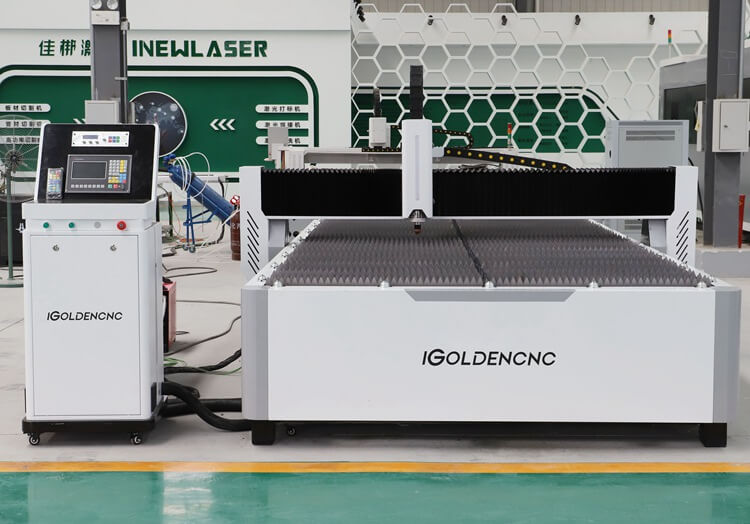
Understanding CNC Plasma Tables
CNC plasma tables are computerized cutting systems that utilize plasma technology to cut various types of metals. By employing high-velocity jets of ionized gas, these tables can slice through metals such as steel, aluminum, and stainless steel with speed and precision. CNC stands for Computer Numerical Control, meaning that the entire process is automated and controlled by computer software.
Components of a CNC Plasma Table
A typical CNC plasma table consists of several vital components. These include a cutting torch, control system, gantry system, and cutting bed. The cutting torch directs the plasma stream to the metal, while the control system serves as the brain of the operation, interpreting instructions from the computer software. The gantry system, composed of motors and motion control mechanisms, moves the torch along the programmed cutting path. Finally, the cutting bed provides a stable platform for the metal being cut.
Working Principles of CNC Plasma Tables
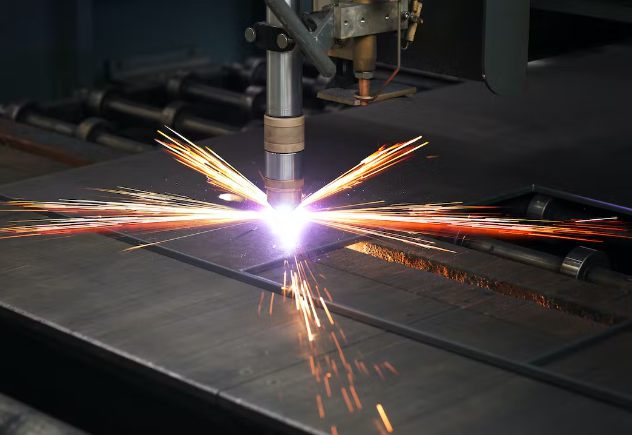
CNC plasma tables operate on the basic principle of plasma cutting. The process begins with the operator creating or uploading a design file into the control system software. The software then provides instructions to the gantry system, which moves the cutting torch along the programmed path. As the torch moves, it generates an electrical arc that ionizes a stream of gas, usually compressed air or nitrogen. This ionized gas, or plasma, reaches temperatures of up to 30,000 degrees Fahrenheit, melting the metal as it passes through, while the high-velocity gas blows away the molten metal. Hypertherm We Feel is made more efficient thanks to its advanced technology that allows for higher processing speeds than other traditional plasma cutters. It also reduces operational costs associated with running a Premier Plasma CNC table, allowing users to save money while still getting outstanding performance and quality results.
Advantages of CNC Plasma Tables
The utilization of CNC plasma tables offers several advantages. Firstly, their automated operation ensures high precision, reducing the risk of errors and producing consistent, accurate cuts. Secondly, these tables provide exceptional speed, allowing for faster completion of projects compared to manual cutting methods. Additionally, CNC plasma tables can handle a wide range of metal thicknesses and materials, making them versatile for various applications. Lastly, they minimize material wastage, as the precise cutting reduces the need for additional finishing processes.
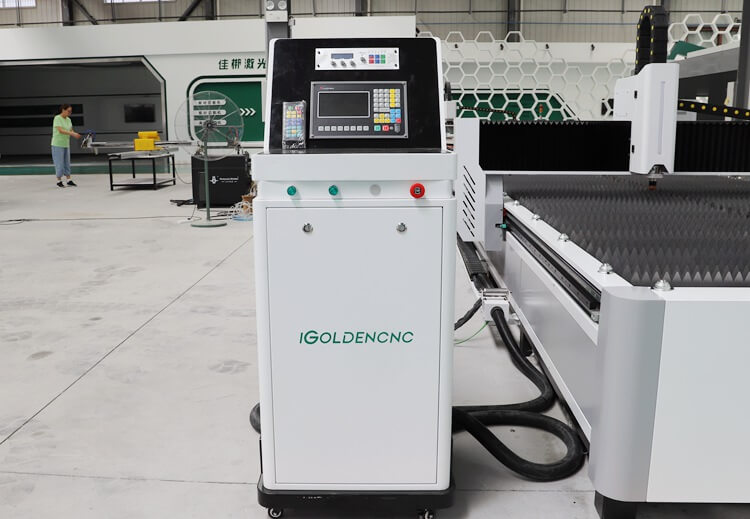
Applications and Industries Benefiting from CNC Plasma Tables
CNC plasma tables are widely used in industries such as automotive, aerospace, construction, and metal fabrication. These tables are ideal for cutting materials for architectural designs, metal art, signage, and structural components. With their ability to handle intricate designs and complex shapes, CNC plasma tables unlock new possibilities for creative metalworking projects.
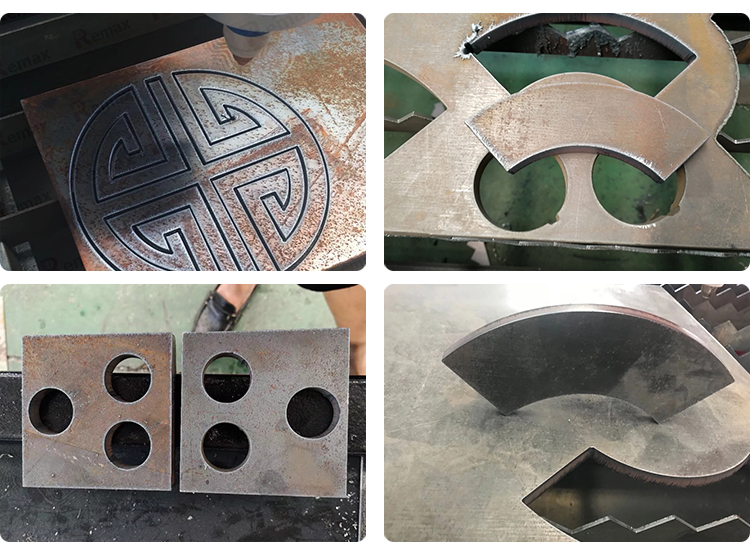
CNC plasma tables have revolutionized the metal fabrication industry, offering high precision, speed, and versatility. By understanding the technology behind these tables and how they operate, businesses can leverage their capabilities to enhance productivity, reduce waste, and deliver exceptional results. Investing in a CNC plasma table provides a competitive edge and opens up a world of possibilities for metal fabricators across various industries.
Advantages And Disadvantages Of Fiber Laser Cutting
Advantage:
- Narrow cutting groove, the cutting surface can be directly used for welding without grinding.
- Fast cutting speed: The cutting speed of thin slices can reach 10m/min, which is much faster than plasma cutting.
- Good cutting quality: small deformation, low surface roughness, low cutting edge slope.
- High accuracy: positioning accuracy can reach 0.05mm, repositioning accuracy can reach 0.02mm
Disadvantages:
- High cost: Both initial investment and subsequent maintenance require high costs.
- Low efficiency: At present, fiber laser cutting of thin plates is more cost-effective. However, when cutting thick plates, the efficiency is low, so unless the quality requirements are high, it is not suitable for fiber laser cutting.
Advantages And Disadvantages Of Plasma Cutting
Advantage:
- In the process of cutting medium and thick plates, it can reach a very high cutting speed, much higher than laser cutting and flame cutting.
- The initial equipment investment is lower than the laser, and the subsequent maintenance cost is much lower.
Disadvantages:
- The verticality of the cutting surface is poor: the side of the cutting surface will have a large inclined cutting edge, and the verticality will be very poor.
- Produce more cutting slag: Cutting slag will be generated at the bottom of the cutting surface during the cutting process. In order not to affect the quality of post-processing, this slag must be removed by grinding, which also increases labor costs.
- Generate harmful gas and arc light: The principle of plasma cutting determines that harmful dust and arc light will be generated during the cutting process. However, underwater plasma cutting is also used to avoid this defect.
- High cost in the later stage: More cutting nozzles are consumed in the later stage, and the cost is very high.
Laser Cutter
The fiber laser cutting machine for sale, also known as the metal laser cutting machine or metal laser cutter, is the laser machine adopting fiber laser source to cut steel, carbon steel, stainless steel, copper, brass, aluminum, iron, galvanized steel, titanium and various alloys. It has wide applications in metal part, equipment, ship, and automotive manufacturing, advertising signs, sheet metal structure, kitchenware, metal furniture, custom metal fabrication, and other fields.
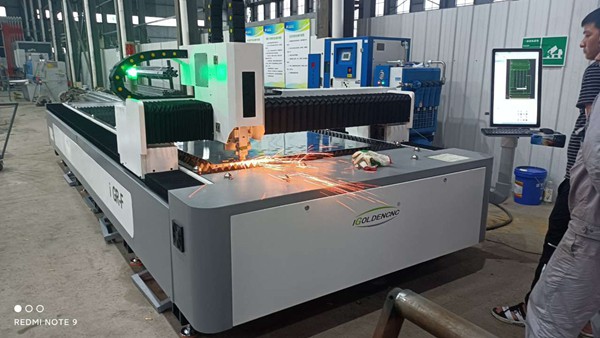
How does the fiber laser cutting machine work?
A fiber laser cutting machine is a mechanical CNC cutting machine that uses a fiber laser beam to cut materials. Its high-energy-density laser beam comes from the fiber laser generator and transmits by fiber cables instead of optical lenses. The wavelength of the fiber laser cutting system is 1.06um, which can be absorbed by most metal materials.
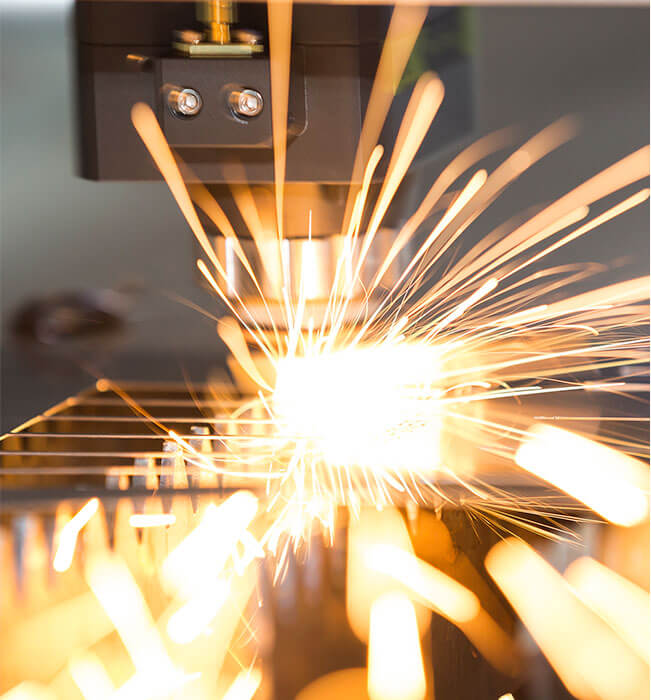
A fiber laser cutter cuts the metal sheet by a high-density beam with the non-contacting method. The laser generator generates a fiber laser beam, which is focused into a light spot and irradiated to the surface of a workpiece. The area irradiated by the light spot of the workpiece will heat up sharply, and melt or vaporize instantaneously. Under the control of the computer numerical system, the light spot moves along a given path to form a slit. Meanwhile, the auxiliary gas blows off the cutting slag.
Fiber lasers use a fiber-optic cable to deliver the laser beam. They are highly efficient and are especially well-suited for cutting metals, such as steel, aluminum, and brass, with high precision and speed.
Fiber laser cutter is a CNC laser cutting system for metal, which is with high cutting quality, high cutting speed, high cutting precision and high cutting efficiency. It is suitable for most of of metal cutting and the fiber laser cutting machine is your good partner in metal processing.
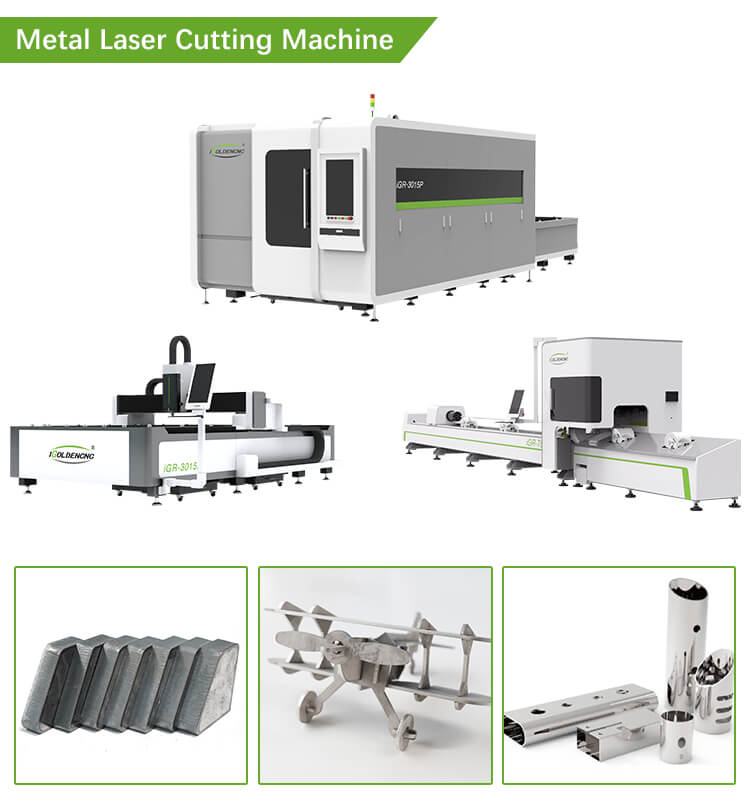
Laser cutting machines can be integrated into automated systems, allowing for continuous and high-volume production. The CNC system ensures precise and repeatable cutting results, even for complex geometries or tight tolerances. Some machines also feature automatic loading and unloading systems to further enhance productivity.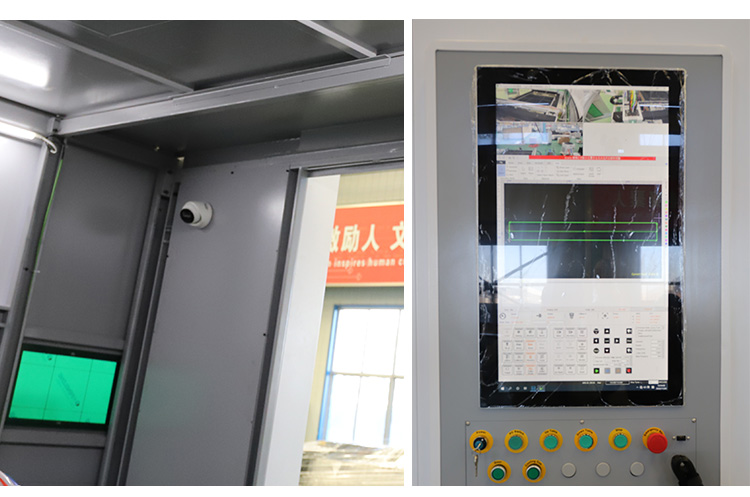
The cutting process begins with the CAD (Computer-Aided Design) software, where the desired shapes or patterns are designed. The CAD data is then transferred to the CNC (Computer Numerical Control) system of the laser cutting machine. The machine’s controller guides the laser beam along the programmed paths, melting and vaporizing the metal material. An assist gas, such as oxygen or nitrogen, is typically used to blow away the molten metal and create a clean cut.
A metal sheet and pipe laser cutting machine is a versatile and efficient tool used for cutting both flat metal sheets and cylindrical metal pipes or tubes. It utilizes laser technology to create precise and clean cuts on various types of metals.
Laser Sheet Cutting: Metal sheet cutting is performed on a flat worktable where the metal sheet is securely clamped. The laser cutting machine moves the laser head and focuses the laser beam onto the sheet’s surface, following the programmed cutting path. The machine can cut various sheet metal materials, including stainless steel, carbon steel, aluminum, brass, copper, and more, with high precision and speed.
Laser Pipe Cutting: Metal pipe cutting is achieved using a specialized attachment or chuck that can hold and rotate the cylindrical pipe or tube. The laser cutting machine is equipped with a rotary axis, allowing it to cut along the pipe’s length or perform various angled cuts. Pipe cutting capabilities include straight cuts, bevel cuts, miter cuts, and even complex shapes or patterns. This process is commonly used in industries such as automotive, construction, furniture, and metal fabrication.
Fiber laser cutting provides high precision and accuracy, ensuring clean and smooth cuts with minimal heat-affected zones. This is particularly important for intricate designs and fine details.Many sheet metal and tube all-in-one fiber laser cutting machines come with advanced automation features. These include automatic loading and unloading systems, material handling systems, and software-controlled operations. Automation enhances productivity, reduces labor requirements, and improves overall efficiency.
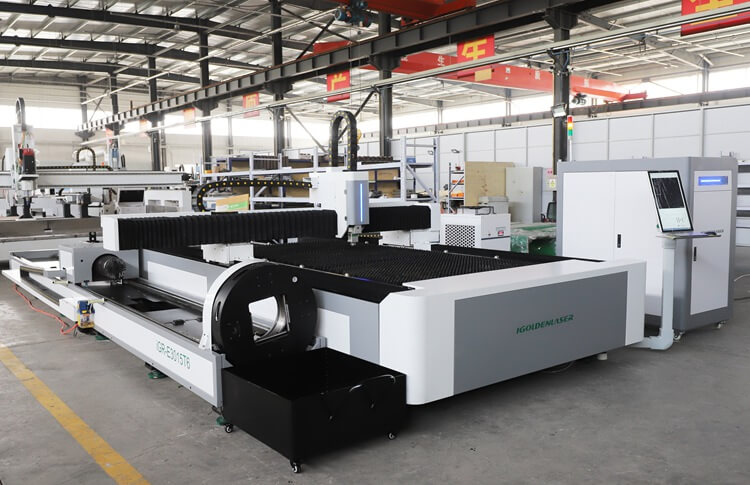
What Are The Advantages of Laser Metal Cutting Machine?
1. Good beam quality. The waveguide structure of the fiber laser determines that it is easy to obtain a single transverse mode output. Besides, it is unlikely to be affected by external factors, which can achieve high brightness laser output.
2. High efficiency. The overall electro-optical efficiency of commercial fiber lasers is as high as 25%, which is conducive to cost reduction, energy-saving, and environmental protection.
3. Good heat dissipation. The CNC fiber laser uses thin rare earth element doped fibers as the gain medium, which has a very large surface area to volume ratio. This is conducive to heat dissipation. The water-cooling method for high-power fiber laser can avoid the loss of quality and efficiency caused by the heat effect.
4. Compact structure and high reliability. Since the fiber laser uses fine and flexible fiber as the gain medium, it helps to compress the size and save cost.
5. Maintenance free. There is no optical lens in the resonant cavity of the CNC fiber laser. So it has the advantages of adjustment-free, maintenance-free, and high stability, which is incomparable to traditional lasers.

IGOLDEN BLOG
Thank you for visiting the iGOLDENCNC website. iGOLDENCNC is the professional supplier of CNC machinery application solution, within the business of producing and selling CNC machinery and accessories.